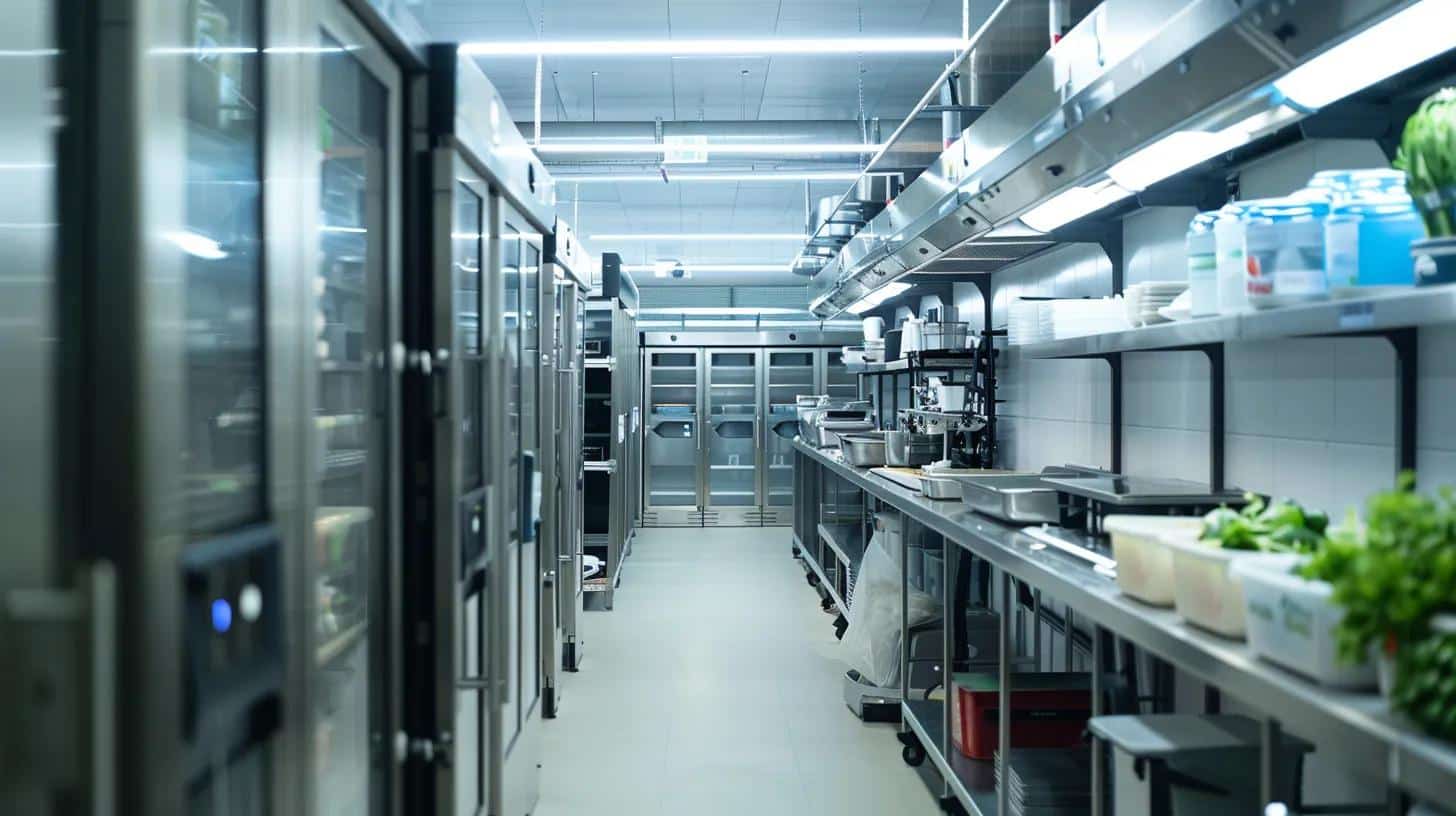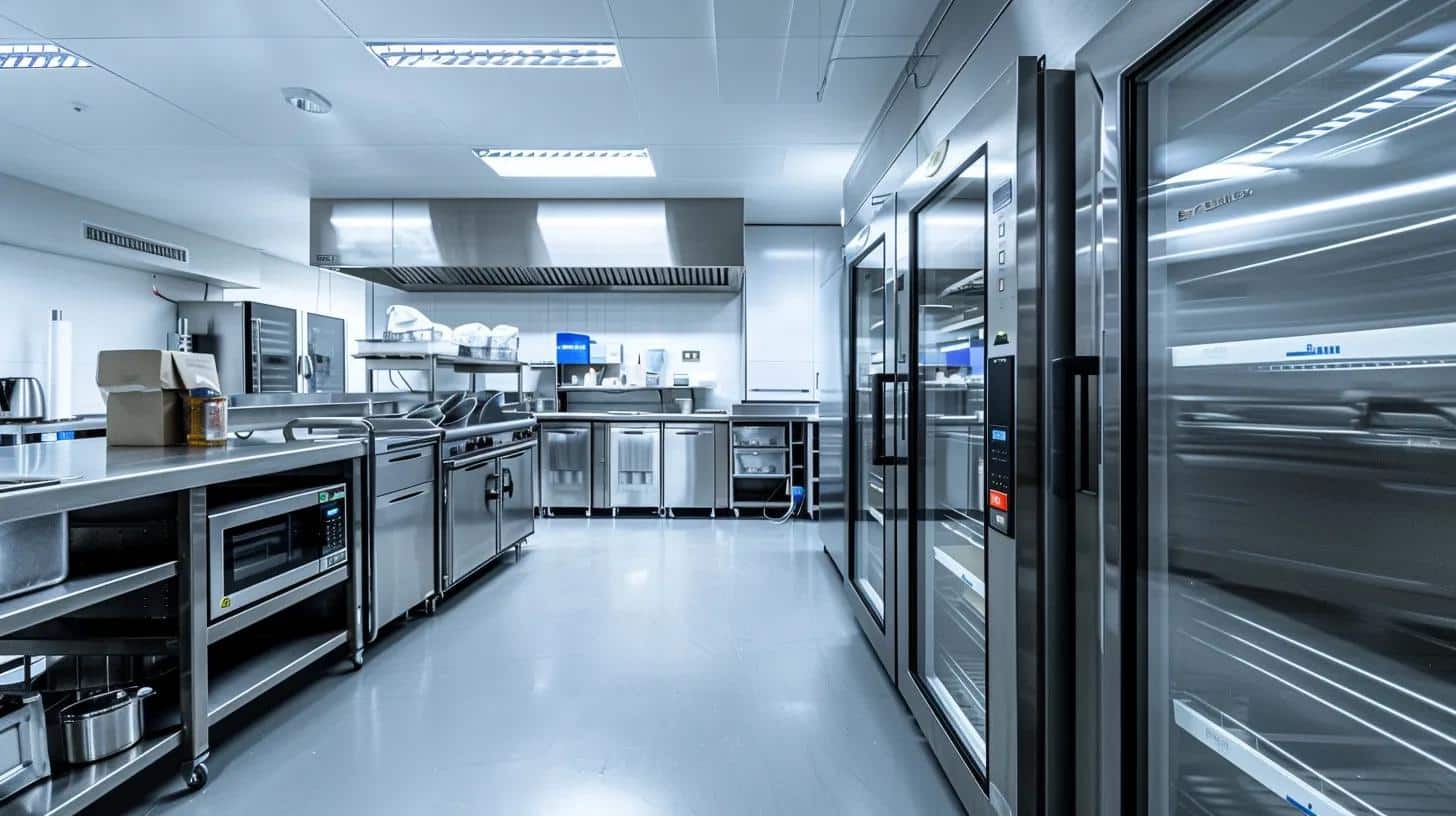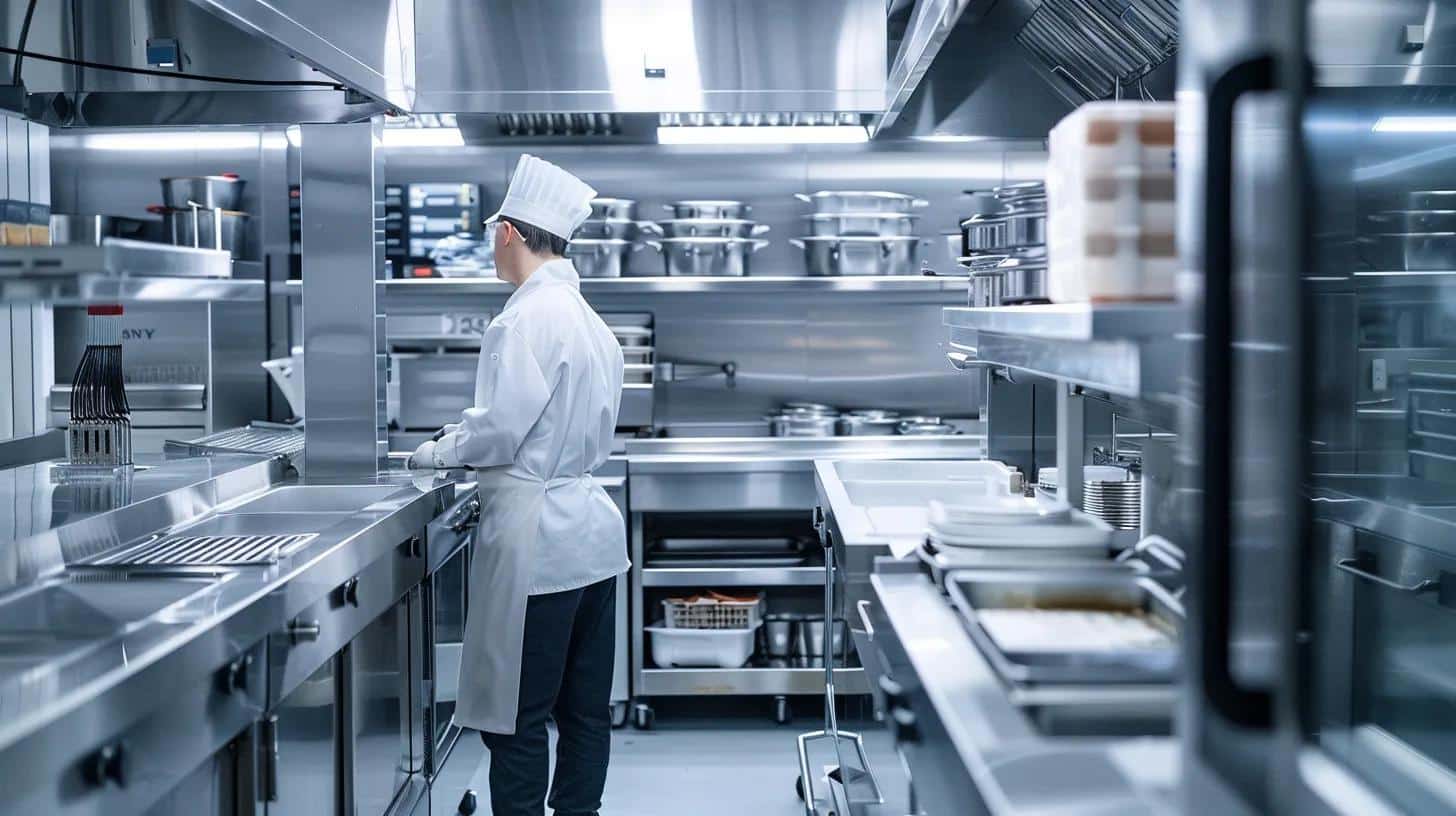
Energy Efficiency in Commercial Refrigeration: What You Need to Know for Your Business
In today’s competitive market, energy-efficient commercial refrigeration systems reduce operational costs, maintain product quality, and support environmental sustainability. Businesses in food service, retail, and hospitality increasingly require technologies that lower energy consumption, minimize waste, and ensure product safety. In regions where ohio refrigeration practices are leading edge, companies are finding new ways to boost efficiency and sustainability. This article overviews essential features, technologies, benefits, and maintenance practices for optimal energy efficiency in commercial refrigeration, while discussing relevant standards and performance metrics.
What Are the Key Features to Consider When Choosing Energy-Efficient Commercial Refrigeration Units?
Choosing the right refrigeration unit requires understanding features that impact energy use and system lifespan. Efficient systems lower operational costs, reduce environmental impact, and keep food products at optimal conditions.
How Do Different Types of Commercial Refrigeration Systems Impact Energy Efficiency?
Different systems play distinct roles in energy performance. Ammonia-based setups in large facilities offer low environmental impact and high thermodynamic efficiency, while cascade or hydrocarbon systems suit smaller operations. Variations such as self-contained versus remote condensing units, and features like variable-speed compressors, help reduce energy waste during low-demand periods.
What Role Do Refrigerants Play in Energy Efficiency and Environmental Impact?
Refrigerants are central to performance. Natural refrigerants such as ammonia and carbon dioxide provide high energy efficiency with low global warming potential. The choice of refrigerant affects the system’s coefficient of performance and heat transfer efficiency, while advanced, low-GWP systems minimize leaks and environmental harm.
How Does Insulation and Design Affect Refrigeration Energy Consumption?
High-quality insulation and smart design help retain cooling effects and reduce heat gain. Features like effective door seals, air curtains, and optimized layouts all maintain stable internal temperatures, lower compressor demand, and minimize food spoilage.
Why Is Advanced Monitoring and Control Essential for Optimizing Energy Use?
Modern systems use sensors, thermostats, and remote monitoring to continuously track temperature, pressure, humidity, and energy use. Real-time analytics allow operators to quickly adjust settings, avoid failures, and address inefficiencies, thus reducing energy consumption and extending equipment life.
How Can Businesses Benefit From Energy-Efficient Commercial Refrigeration?

Adopting energy-efficient refrigeration brings operational improvements and cost savings. Benefits include lower energy bills, enhanced reliability, improved product quality, and compliance with environmental standards, all contributing to a competitive advantage.
What Are the Typical Energy Savings and Cost Reductions Achieved?
Energy-efficient systems can reduce electricity consumption by up to 30% compared to traditional models, lowering both operational and maintenance costs. Savings from reduced energy use and extended system lifespans can boost business profitability and support competitive pricing.
How Does Energy Efficiency Contribute to Environmental Sustainability?
These systems lower carbon footprints by reducing energy use and greenhouse gas emissions. Compliance with ENERGY STAR and other environmental standards helps businesses meet sustainability goals, a factor increasingly valued by customers and investors.
What Are the Operational Benefits of Using Energy-Efficient Refrigeration Systems?
Beyond cost savings, efficient systems offer improved reliability, stable temperature control, and extended shelf life for products. Enhanced insulation and real-time monitoring reduce equipment wear, decrease incidents of spoilage, and promote food safety, ultimately improving operational performance and staff productivity.
What Are the Latest Technologies and Trends in Commercial Refrigeration for Energy Efficiency?
The refrigeration industry is evolving with innovations that maximize energy performance and reduce environmental impact. Staying current with technology is vital for achieving superior energy management.
Which Refrigeration Technologies Offer the Best Energy Performance?
Innovations such as variable-speed compressors, inverter technology, and advanced heat exchangers deliver high performance. Systems using natural refrigerants like ammonia and carbon dioxide not only offer excellent thermodynamic performance but also reduce the overall environmental footprint, adapting their operation under variable load conditions.
How Are Smart Refrigeration Systems Enhancing Energy Management?
Smart systems leverage IoT devices, cloud analytics, and machine learning to optimize operation. Continuous performance monitoring and predictive maintenance allow operators to prevent breakdowns and adjust settings in real time, ensuring that systems run efficiently even during peak demand.
What Are the Emerging Refrigerants and Their Energy Efficiency Benefits?
New refrigerants like hydrofluoroolefins (HFOs) and natural options such as propane and isobutane are gaining favor for their low global warming potential and high efficiency. These emerging options improve heat transfer and lower compressor energy needs while supporting compliance with stricter environmental regulations.
How Can You Optimize the Performance and Maintenance of Your Commercial Refrigeration System?

Maintaining high performance in refrigeration systems requires regular monitoring, preventive maintenance, and timely operational adjustments. These practices help ensure continued energy efficiency and extend equipment life.
What Are the Best Practices for Maintaining Energy Efficiency?
Routine tasks such as cleaning condenser coils, checking refrigerant levels, and verifying insulation integrity are essential. A scheduled maintenance plan helps prevent issues like refrigerant leaks or compressor failures, keeping the system within optimal parameters and reducing energy consumption.
How Does Monitoring and Control Prevent Energy Waste?
Systems integrated with smart sensors provide immediate feedback on energy use and potential inefficiencies. This proactive monitoring allows for quick adjustments and timely repairs, ensuring that units operate only as needed and reducing idle energy consumption.
What Energy-Saving Tips Can Businesses Implement Immediately?
Simple strategies such as improving door seals, setting proper temperature thresholds, and using programmable thermostats can lower energy use. Educating staff about minimizing door openings and reducing ambient heat further contributes to energy savings and system longevity.
How Does CoolTech Solutions Support Businesses With Energy-Efficient Refrigeration Products and Services?
CoolTech Solutions provides innovative, energy-efficient refrigeration systems designed for sustainability and operational excellence. Their products and services cater to various industries with a focus on reducing energy consumption and operational costs.
What Energy-Efficient Walk-in Coolers Does CoolTech Solutions Offer?
Their walk-in coolers feature high-performance insulation, adaptive cooling systems, and environmentally friendly refrigerants. These units maintain consistent temperature control and can reduce energy consumption by up to 25%, offering significant long-term savings.
How Do CoolTech’s Display Cases Maximize Energy Savings and Product Visibility?
CoolTech’s display cases incorporate LED lighting, low-emissivity glass, and precise temperature control to both enhance product visibility and minimize energy use. This design not only cuts costs but also supports marketing by presenting products in optimal conditions.
What Installation and Maintenance Services Ensure Optimal Energy Efficiency?
They offer professional installation to calibrate each unit for peak performance, along with ongoing maintenance services. Regular check-ups, troubleshooting, and system upgrades help avoid downtime and maintain efficiency over the product lifecycle.
What Are the Relevant Energy Efficiency Standards and Regulations Affecting Commercial Refrigeration?
Compliance with energy efficiency standards is crucial for
. Government policies and certification programs ensure that systems meet performance criteria and help businesses secure rebates and incentives.
Which Government Regulations Drive Energy-Efficient Refrigeration Adoption?
Regulations like ENERGY STAR, ASHRAE standards, and local building codes specify criteria for insulation, refrigerant leakage, and energy use. These rules encourage the adoption of advanced, energy-efficient technologies.
How Do Energy Efficiency Ratings and Certifications Influence Purchasing Decisions?
Certifications serve as a performance guarantee, encouraging buyers to choose models with lower operational costs and maintenance expenses. Transparent ratings foster market competition and drive innovation in energy-efficient design.
What Are the Environmental Regulations Regarding Refrigerants?
New regulations require the use of refrigerants with low global warming potential and minimal ozone depletion potential. These mandates ensure that refrigeration systems are both environmentally friendly and sustainable.
How Can Businesses Measure and Track Energy Efficiency in Their Commercial Refrigeration Systems?
Monitoring key performance indicators (KPIs) is essential for managing refrigeration efficiency and making informed investment decisions. Reliable tracking helps maintain energy conservation efforts.
What Key Performance Indicators Should Be Monitored?
KPIs such as energy consumption per cooling unit, system runtime, compressor efficiency, and refrigerant leakage levels indicate the system’s performance. Additional metrics like door open frequency and ambient temperature help provide a complete energy efficiency profile.
Which Tools and Technologies Help Track Refrigeration Efficiency?
Modern energy management systems with IoT sensors and cloud-based analytics offer real-time reporting and automated alerts. These tools quickly highlight deviations from optimal operation and support proactive maintenance.
How Can Data-Driven Insights Improve Refrigeration Performance?
Continuous data analysis allows businesses to adjust operations during peak usage, prevent energy waste, and improve system design over time. This proactive approach extends equipment life and lowers overall maintenance costs.
Table: Key Performance Indicators for Refrigeration Systems
| KPI | Attribute | Benefit | Example Value |
|---|---|---|---|
| Energy Consumption | kWh per BTU | Lower operational costs | 0.8 kWh/BTU |
| Compressor Efficiency | COP (Coefficient of Performance) | Improved cooling performance | COP of 4.5 |
| Refrigerant Leakage | Percentage loss per year | Reduced waste and environmental harm | < 3% per annum |
| Door Open Frequency | Count per hour | Enhanced stability and reduced energy use | 5–7 openings/hr |
Frequently Asked Questions
Q: What are the primary benefits of energy-efficient refrigeration? A: They reduce energy consumption, cut operational costs, improve product quality, and support environmental sustainability.
Q: How can businesses track refrigeration energy performance? A: By monitoring KPIs like energy consumption, compressor efficiency, and refrigerant leakage using smart sensors and analytics software.
Q: What regulatory standards affect refrigeration energy efficiency? A: ENERGY STAR, ASHRAE standards, and local codes set performance criteria and mandate low-GWP refrigerants.
Q: Which technologies improve refrigeration energy efficiency? A: Variable-speed compressors, IoT-enabled monitoring systems, and natural refrigerant systems rank highly in performance.
Q: How does smart monitoring benefit refrigeration maintenance? A: Real-time data enables proactive maintenance, reducing downtime and ensuring efficient operation.
Final Thoughts
Energy-efficient commercial refrigeration is key to reducing costs, enhancing product quality, and meeting sustainability goals. By focusing on system type, refrigerants, design, and smart monitoring, businesses can achieve operational reliability and significant energy savings. Adhering to regulatory standards ensures sustained performance and a reduced environmental footprint, giving companies a competitive edge in an eco-conscious market.
